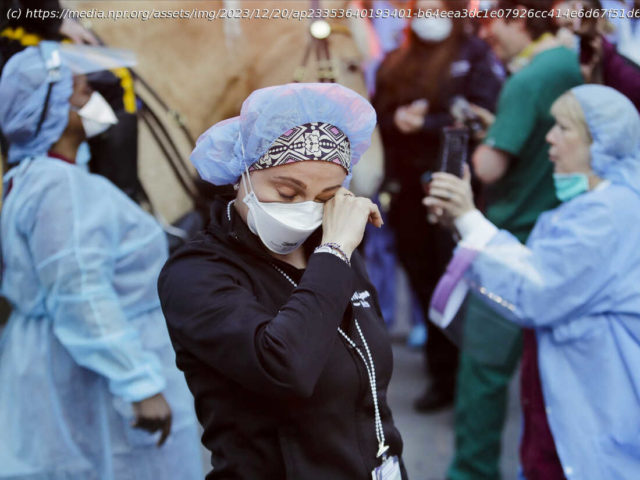As a deadline to allocate federal COVID-19 cash approaches next year, states must decide how much to invest in maintaining warehouses and supply stockpiles after panic buying during the pandemic.
When the coronavirus pandemic took hold in an unprepared U.S., many states like Ohio scrambled for masks and other protective gear. Supplies were so limited in 2020 that the state bought millions of medical gowns from a marketing and printing company and spent about $20 million to try to get personal protective equipment made in-state.
Three years later, as the grips of the pandemic have loosened, Ohio and other states are now trying to deal with an excess of protective gear, ditching their supplies in droves.
With expiration dates passing and few requests to tap into the stockpile, Ohio auctioned off 393,000 gowns for just $2,451 and ended up throwing away another 7.2 million, along with expired masks, gloves and other materials. The now expiring supplies had cost about $29 million in federal money.
A similar reckoning is happening around the country. Items are aging, and as a deadline to allocate federal COVID-19 cash approaches next year, states must decide how much to invest in maintaining warehouses and supply stockpiles.
An Associated Press investigation found that at least 15 states, from Alaska to Vermont, have tossed some of their trove of PPE because of expiration, surpluses and a lack of willing takers.
Into the trash went more than 18 million masks, 22 million gowns, 500,000 gloves, and more. That’s not counting states that didn’t give the AP exact figures or responded in cases or other measurements. Rhode Island said it shredded and recycled 829 tons of PPE; Maryland disposed of over $93 million in supplies.Lack of planning leads to panic over-purchasing
„What a real waste. That’s what happens when you don’t prepare, when you have a bust-and-boom public health system,“ where a lack of planning leads to panicked over-purchasing in emergencies, said Dr. Georges Benjamin, executive director of the American Public Health Association. „It shows that we really have to do a better job of managing our stockpiles.“
The AP sent inquiries about PPE stockpiles to all 50 states over the past several months. About half responded.
States emphasize that they distributed far more gear than they discarded and have gone to lengths to donate the leftovers. Washington state sent hundreds of thousands of supplies to the Marshall Islands last year. Pennsylvania says it offered PPE to 10,000 cities, health facilities and more throughout the pandemic. Both states still ended up throwing out loads of expired items.
Some states found limited post-expiration uses, such as training exercises.
Many states are keeping at least a portion, and sometimes all, of their remaining protective gear. Some, such as Minnesota, even plan to update their stockpiles.
But others say the vagaries of the pandemic and the PPE supply left no choice but to acquire the items, and now to throw them out, however reluctantly. Expiration dates are set because materials can degrade and might not work as intended. The Federal Emergency Management Agency has set the fair market value of expired supplies at zero dollars.
„Anytime you’re involved in a situation where you’re recalling how difficult it was to get something in the first place, and then having to watch that go or not be used in the way it was intended to be used, certainly, there’s some frustration in that,“ said Louis Eubank, who runs the South Carolina health department’s COVID-19 coordination office. The state has discarded over 650,000 expired masks.Global bidding wars and anything-goes arrangements
Before the coronavirus pandemic, health care product distributors typically kept 20 to 30 days of supplies.
Start
United States
USA — Financial States are trashing troves of masks and protective gear as costly stockpiles...






